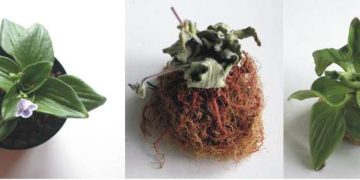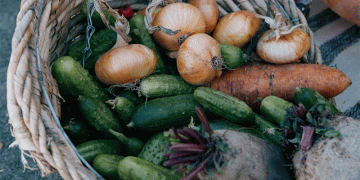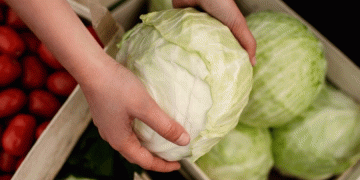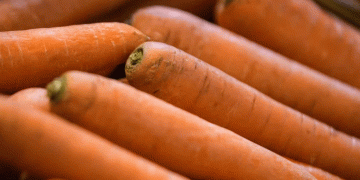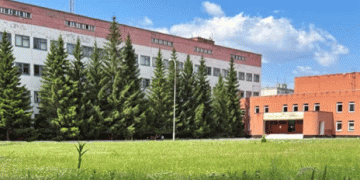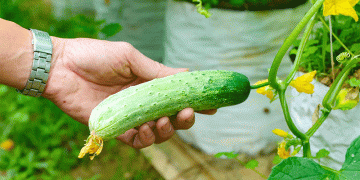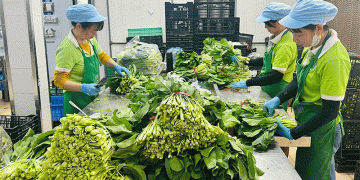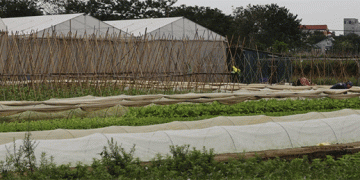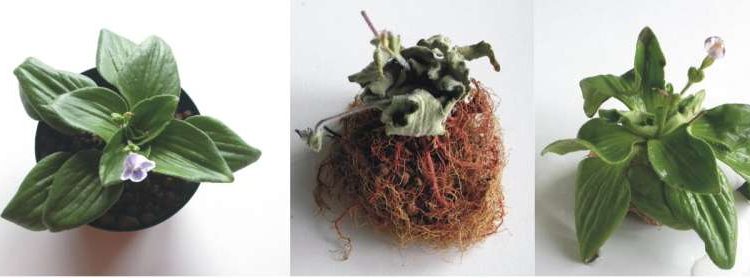Some plants can survive months without water, only to turn green again after a brief downpour. A recent study by the Universities of Bonn and Michigan shows that this is not due to a “miracle gene.” Rather, this ability is a consequence of a whole network of genes, almost all of which are also present in more vulnerable varieties. The results have already appeared online in The Plant Journal.
In their study, the researchers took a close look at a species that has long been studied at the University of Bonn—the resurrection plant Craterostigma plantagineum. It bears its name quite rightly: In times of drought, one might think it is dead. But even after months of drought, a little water is enough to revive it. “At our institute, we have been studying how the plant does this for many years,” explains Prof. Dr. Dorothea Bartels from the Institute of Molecular Physiology and Biotechnology of Plants (IMBIO) at the University of Bonn.
Her interests include the genes that are responsible for drought tolerance. It became increasingly clear that this ability is not the result of a single “miracle gene.” Instead, a great many genes are involved, most of which are also found in species that do not cope so well with drought.
The plant has eight copies of each chromosome
In the current study, Bartel’s team, together with researchers from the University of Michigan (U.S.), analyzed the complete genome of Craterostigma plantagineum. And this is built quite complex: While most animals have two copies of each chromosome—one from the mother, one from the father—Craterostigma has eight. Such an “eightfold” genome is also called octoploid. We humans, in contrast, are diploid.
“Such a multiplication of genetic information can be observed in many plants that have evolved under extreme conditions,” Bartels says. But why is that? A probable reason: If a gene is present in eight copies instead of two, it can in principle be read four times as fast. An octoploid genome can therefore enable large quantities of a required protein to be produced very quickly. This ability also appears to be important for the development of drought tolerance.
In Craterostigma, some genes associated with greater tolerance to drought are even further replicated. These include the so-called ELIPs—the acronym stands for “early light inducible proteins,” as they are rapidly switched on by light and protect against oxidative stress. They occur in high copy numbers in all drought-tolerant species.
“Craterostigma has close to 200-ELIP genes that are nearly identical and are located in large clusters of ten or twenty copies on different chromosomes,” Bartels explains. Drought-tolerant plants can therefore presumably draw on an extensive network of genes that they can rapidly upregulate in the event of drought.
Drought-sensitive species usually have the same genes—albeit in lower copy numbers. This is also not surprising: The seeds and pollen of most plants are often still able to germinate after long periods without water. So they also have a genetic program to protect against drought. “However, this program is normally switched off at germination and cannot be reactivated afterwards,” the botanist explains. “In resurrection plants, in contrast, it remains active.”
Most species ‘can do’ drought tolerance
Drought tolerance, then, is something that the vast majority of plants “can do.” The genes that confer this ability probably emerged very early in the course of evolution. However, these networks are more efficient in drought-tolerant species and, moreover, are not active only at certain stages of the life cycle.
That said, not every cell in Craterostigma plantagineum has the same “drought program” either. This was shown by researchers from the University of Düsseldorf, who were also involved in the study. For instance, different drought network genes are active in roots during desiccation than in leaves. This finding is not unexpected: Leaves, for instance, need to protect themselves against the damaging effects of the sun. They are helped in this by ELIPs, for example. With sufficient moisture, the plant forms photosynthetic pigments that at least partially absorb radiation. This natural protection largely fails during drought. Roots, in contrast, do not have to worry about sunburn.
The study improves understanding of why some species suffer so little from drought. In the long term, it could therefore contribute to the breeding of crops such as wheat or corn that cope better with drought. In times of climate change, these are likely to be in greater demand than ever in the future.
